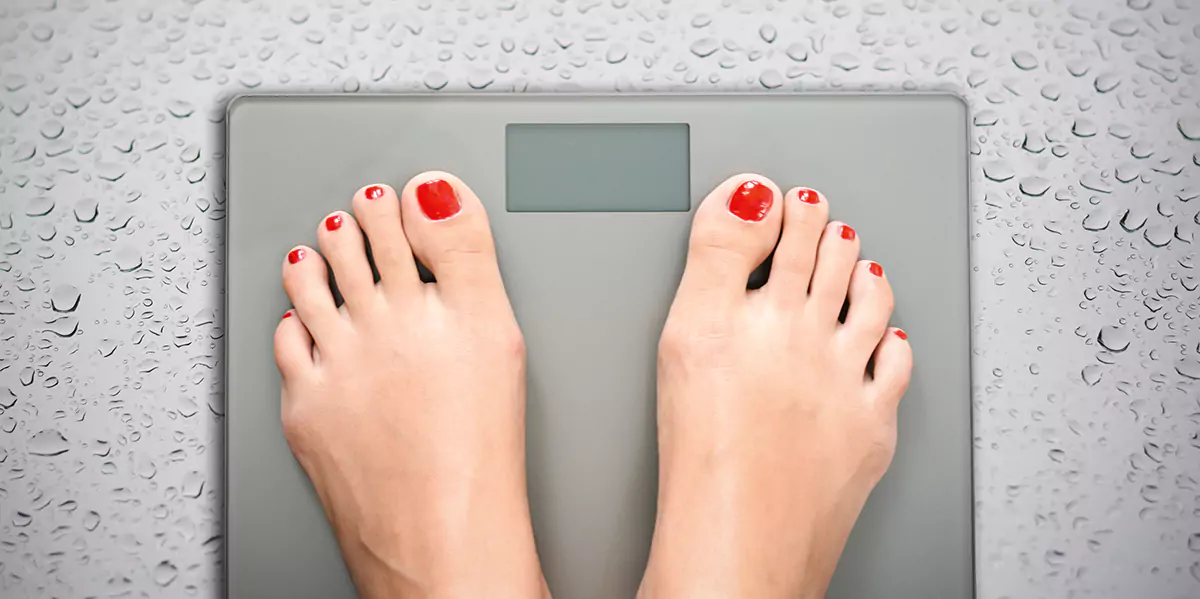
While many associate breast surgery with starlets and Hollywood, that’s far from today’s reality.
According to a study posted in the National Library of Medicine, the average private practice cosmetic surgery patient is married (67.5%), college-educated (66.9%), and employed (74.3%). It’s therefore no surprise that patients who seek breast surgery are often concerned about post-surgery down time and aftercare.
For working women in the UK, balancing the physical demands of surgery with professional responsibilities is a big concern. If you’ve been considering breast surgery, one of the ways you can get more in-depth personalised information is through our free surgeon consultation.
Going through any surgery including breast surgery has a significant impact on your condition and health. The first few days of care immediately following your breast augmentation or breast reduction surgery is the most important. For many women, especially those balancing busy professional lives, understanding and managing this phase effectively can make a significant difference in both their healing time and final outcome.
Navigating the First Hours Post-Breast Surgery
What to expect in the first 24-48 hours
Immediately after your breast job, you’ll likely feel groggy. Some rest should help you recover from this completely. Your breasts will also likely be sore and swollen, or feel bruised and tender, for which your surgeon and his team will provide specific instructions regarding medication (including type, dosage, and frequency).
Depending on the type of bust surgery you may have drain tubes placed to reduce fluid buildup. Your movements may be limited, and you’ll be advised to be careful. Walking around may be helpful to reduce the chance of developing clots in your legs (also called deep vein thrombosis).
Clothing and Underwear
The surgical team may provide you with a surgical bra or compression garment following your breast surgery. When worn according to directions, these surgical bras will support you comfortably and aid in your recovery. While wearing the surgical bra, it is important to avoid any tight clothing that could chaff at incisions or drainage tubes.
The surgical bra fastens at the front to help you avoid any stretching. It should fit snugly and comfortably, without any pressure on the incisions. If you feel the need, you may adjust the straps to provide gentle compression without causing discomfort.
Pain Management
Your early days post breast surgery will be focused on managing your pain. Be sure to follow your surgeon’s prescription, and pay close attention to dosage and timing. Do not take any other additional pain medication, unless approved by your doctor. Staying ahead of the pain by following your prescription as directed, helps in a smoother recovery.
In addition to the above, you can use an ice pack on the affected area to help reduce swelling and numb pain. Also, adjust your sleeping or sitting position to semi-upright position, using pillows to reduce strain on your bust chest and minimise discomfort. Consider some easy breathing exercises (not too deep) to help you sleep.
Physical Care and Body Hygiene
After any surgery including breast surgery, your body needs time and rest to heal. This means often making significant adjustments to your daily routine. During this period, it’s important to monitor for any signs of complications (unusual swelling, discharge) and reach out to your surgical team if you are uncertain.
Bathing & Washing: Surgical areas need to stay clean and dry to prevent infection. Do not pour water or submerge your breasts (bathing or swimming) unless cleared by your surgeon. Your surgeon will inform you when to begin bathing and cleaning your incisions, and with what (usually with mild soap and water). Until then avoid any lotions, cleansers, or creams that are not prescribed.
Incisions & Drainage Tubes: Keep your sterile dressings dry, and get them changed as per your follow-up visit schedule. If you have drainage tubes, your surgeon may give you instructions on how to remove the fluid buildup. Follow these instructions carefully and make sure that while washing or dressing, your tubes are secure and not being pulled or compressed.
Follow-Up Appointments and Monitoring
Keeping your follow-up appointments is critical. Your surgeons need to examine your breast surgical sites to monitor your recovery progress. These visits with the specialists help them assess your level of healing, remove stitches (if needed), and address any of your concerns. Check-up visits are also a useful time to discuss any concerns you may have and receive guidance on transitioning back to your normal activities.
Pre-Surgery Planning for a Smoother Recovery
Research suggests that pre-surgery planning can help reduce hospital stays and complications by up to 20%. Additionally, a study by BMC Psychology states women who engage in pre-surgery supportive and goal-oriented strategies experience significantly lower post-surgery distress.
Here are some ways in which advance preparation for breast surgery can smooth the pathway towards recovery.
1. Think Through Your Recovery Plan
- Get the home ready: Stock up on groceries, fill prescriptions, and arrange your recovery area with essentials like pillows, blankets, and entertainment.
- Plan the meals: Prepare or purchase easy-to-reheat meals to minimise cooking.
- Apply for time off: Arrange for adequate time off work, with some potential leave for extended recovery, if needed.
2. Arrange a Support System:
- Arrange for help: Ensure someone is available to assist you with daily tasks, such as cooking, cleaning, and childcare.
- List emergency contacts: Keep a list of emergency contacts, including your surgeon and a trusted friend or family member.
- Get everyone onboard: Discuss your needs and limitations with your support system, parents, spouse and kids before the surgery, to ensure all questions are answered and everyone is aware of the upcoming surgery.
3. Make Daily Tasks Easier:
- Organise your essentials: Keep frequently used items within easy reach to avoid unnecessary stretching or bending.
- Wear easy clothing: Opt for loose, front-opening tops to make dressing and undressing easier.
- Shower safely: Consider getting a shower chair and stock up on your prescribed cleansers to avoid using whatever is easily on hand.
4. Set-up a Comfy Recovery Space:
- Create a healing nook! This will be fun… set up a quiet, cosy space with pillows for back support, with space for your phone charger, water, and medications close by.
- Stock up on pillows: Ensure you can sleep comfortably with some extra pillows nearby to prop yourself up and reduce strain on your chest.
- Control your environment: Let friends and family know when you will be awake for visitors. Avoid intensive activities such as playing video games, and stick to less strenuous activities like reading or catching up on the latest episode of Love Island.
Staying Abreast of Restrictions and Activities
In the first few weeks after your breast surgery, your focus should be on rest and limited movement. Light activities like short walks are encouraged to help with your blood circulation, but avoid any movements that strain the chest or upper body.
Always pay close attention to your body and do not try to push beyond your comfort level.
Returning to Work: Your return to work will depend on the nature of your job. For desk jobs, you may return within 2-3 weeks, but more physically demanding roles might require 4-6 weeks off. Talk to your supervisors to help gradually ease back into your routine, and avoid tasks that could strain your chest or incisions.
Carrying Young Children: Avoid lifting or carrying young children for at least 4-6 weeks post-surgery. If you need to hold them, ask someone to place the child on your lap while seated. Explain to your children that mummy needs time to heal, and seek help from family or friends for childcare duties.
Housework and Chores: Limit cooking and cleaning for the first few weeks. If necessary, only perform light tasks that don’t require bending, lifting, or stretching. Do think ahead about how to manage meals and any daily routines you may have. Avoid vacuuming, mopping, or any activity that involves upper body strain until you’re fully cleared by your surgeon.
Getting Around: After breast surgery, it’s crucial to avoid driving until you’ve recovered and received medical clearance. Initially, you might experience limited mobility and discomfort, which can affect your ability to drive safely. Arrange for ridesharing services or taxis to get around safely. Alternatively, ask family and friends for help with lifts and errands.
Activities and Lifting: Avoid lifting any weights for the first two weeks after your surgery. Even after that, refrain from lifting anything heavier than half a kg, including children or groceries. Avoid strenuous activities like bending, stretching, or exercising, as these can strain the surgical site and impede healing. Even seemingly simple tasks, like reaching overhead, should be avoided until cleared by your surgeon.
| WEEKS | ACTIVITIES | DETAILS |
1-2 | Rest and Light Activities | Concentrate on getting some rest. Steer clear of labour-intensive tasks, vigorous exercise, and heavy lifting. If at ease, light walking is recommended. |
3-4 | Light Chores and Gentle Exercise | Return to simple home chores gradually. Begin mild physical activities, such as gentle stretches or quick strolls. |
5-6 | Moderate Work and Exercise | Restart some planned exercises and mild work tasks. Steer clear of intense exercise or heavy lifting. |
7-8 | Increased Workload and Exercise | It’s time to now begin your work-related activities, and up the tempo of your workouts. Remember to run any high-impact activities by your surgeon first. |
9-12 | Full Activity Resumption | No complications? Then you are ready to step back into your routine! |
Cup Half Full? Exercising After Breast Surgery
While resuming exercise may seem like a great idea to stay active and healthy, overexertion can often lead to complications like delayed healing or implant displacement. Check with your surgeon before easing back… slowly… into your exercise routine.
To help you, we detailed some gentle exercises that’ll help you stay on course for your post breast surgery healing.
Weeks 1-2
Deep Breathing Exercises: Gentle deep breathing helps expand the lungs and prevent stiffness in the chest. Inhale slowly, hold your breath for a comfortable few seconds, and then exhale. Repeat a few times a day.
Short Walks: Begin with brief, slow walks around your home or garden. This will improve your mood, increase your circulation, and also help prevent blood clots. Start with 5 minutes a day, and work your way up to 10 minutes twice a day.
Weeks 3-4
Shoulder Rolls: Release tension in your neck and back, by rolling your shoulders gently, five to ten times in each direction. Be sure to keep the pace slow and gentle.
Small Circles: Extend your arms on either side, while standing or sitting comfortably. Move your hands to male small circles, five times in the clockwise direction and then anti-clockwise.
Weeks 4-6
Wall Walks: Face a wall and place your hands on it. Then slowly let your fingers "walk" along up the wall till you reach a comfortable length. Avoid straining to reach too high. Hold the position for a few seconds, then walk back down. Repeat five times.
Lower Body Exercises: Gentle leg exercises like leg lifts while seated, or stationary cycling (no arm movement) can be started to maintain your lower body strength.
Weeks 6-8 onwards
Stretching and Yoga: Light stretching of the arms, shoulders, and back, and simple yoga positions (avoid chest strain), can be initiated. As your comfort levels increase, you can increase the intensity. No straining.
We’ve said it before and we will say it again. It is important to attend your follow-up appointments with your surgeon. So before beginning any exercise, always consult with your surgeon as recovery timelines can vary based on individual circumstances.
Caring for Kids After Your Breast Surgery
Minimising physical exertion and stress allows you to focus on recovery, reduces risk of complications, and promotes faster healing. But if you have kids, you’ll need to think through how you’ll manage their time while recovering.
Here are some ideas that can help manage your children without compromising your health or recovery plan.
Stock up on Meals and Snacks! They get bored and they get hungry. So be prepared with easy-to-serve snacks or pre-cooked meals for your children.
Establish a Play Area. Set aside a space for your children to play with toys, books, and puzzles so they can pass the time while you get some rest. Keep this space near enough your cosy spot so you can easily keep an eye on them.
Got a Playpen or Gate? If you have a playpen or baby gate, consider moving their play zone to a new safe spot (novelty for the kids) which is closer to your recovery area.
Screens (say hi to your new best friend): Yes, screens will keep your kids occupied and quiet while you get your much needed rest. Set up a TV or tablet with educational shows, movies, or games. You can even pre-set automatic time limits, so that they don’t go overboard with the devices.
Hurray for Nap Time! Remember those early baby days? If your kids are still young enough to nap, then this is the time for you to get some rest as well.
Creative Tables: Setup an area for children to play with sticker books, puzzles, with some new supplies for drawing and colouring. Maybe avoid the messy paints for a couple of weeks?
Story Time: Read books together! If you’re not up to holding the book, use an audiobook or e-reader and let your children follow along.
Long-Term Aftercare and Lifestyle Adjustments
Ongoing Care for Surgical Site
Once your healing is done, you can manage your breast skincare by keeping the area well moisturised. Use scar treatments only as advised by your surgeon to reduce scarring. Protect your breasts from sun exposure (and avoid the sun in general for a few weeks), and follow any specific aftercare instructions to reduce the risk of complications.
Maintaining Breast Health
Regular check-ups with your healthcare provider are crucial for monitoring breast health. Self exams must be done regularly to check for any changes in your breasts. Report any unusual feelings, such as lumps or changes in skin texture, to your surgeon quickly so they can address potential issues before they become serious.
Psychological and Emotional Well-being
Body image changes post-surgery can be challenging, and you need to be aware of these feelings. Seek support from counselling or support groups to help navigate emotional changes and improve mental well-being. Talking to others who have had similar experiences can provide comfort and valuable insights. Sunion Health can put you in touch with a patient advisor who will be able help you work through any concerns or emotional states you may be experiencing, post your surgery.
When to Contact Your Surgeon
Post your breast surgery it is important to monitor for signs of infection, such as increased redness, warmth, or discharge from the incision site. Always contact your surgeon if you experience severe pain, unexpected swelling, or fever.
Excessive bleeding or unusual swelling, could signal complications that need immediate attention. If you notice any of these symptoms, seek medical advice to prevent worsening.
And don’t forget to attend all your scheduled follow-up appointments. Even if you think you are actively healing it’s important for the surgeons to check your rate of healing as well!
Balancing Care with your Professional Needs
According to the data, the most popular cosmetic surgery among women in the UK was breast augmentation with over 4.6 thousand procedures. Breast reduction was the second most common surgery with around 3.1 thousand procedures.
For women who are considering breast surgery, understand that the post-surgery care involves careful attention to pain management, adherence to activity restrictions, and regular follow-up appointments.
Balancing your care needs with your professional and personal responsibilities can be challenging. But with proper planning and support, you can navigate this period effectively and return to your daily routine with confidence.









